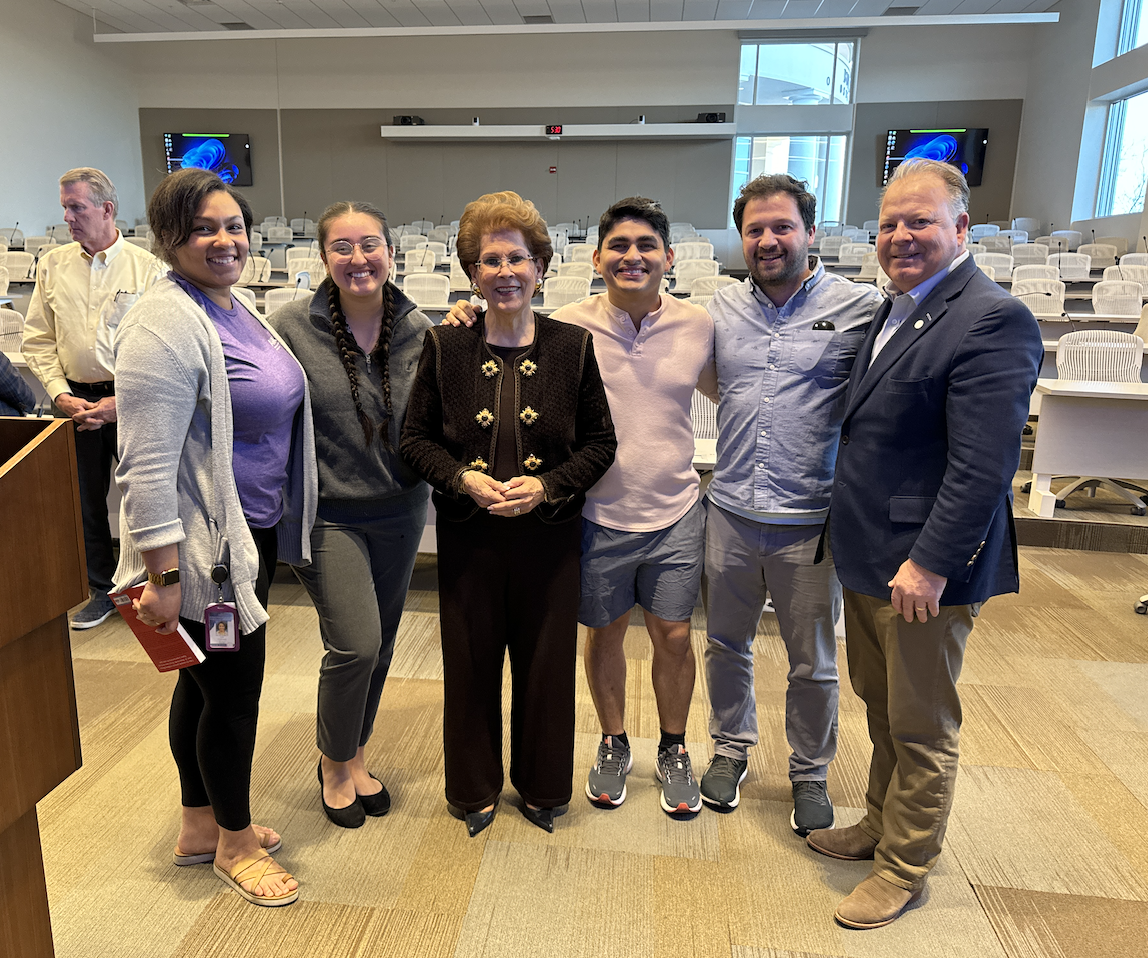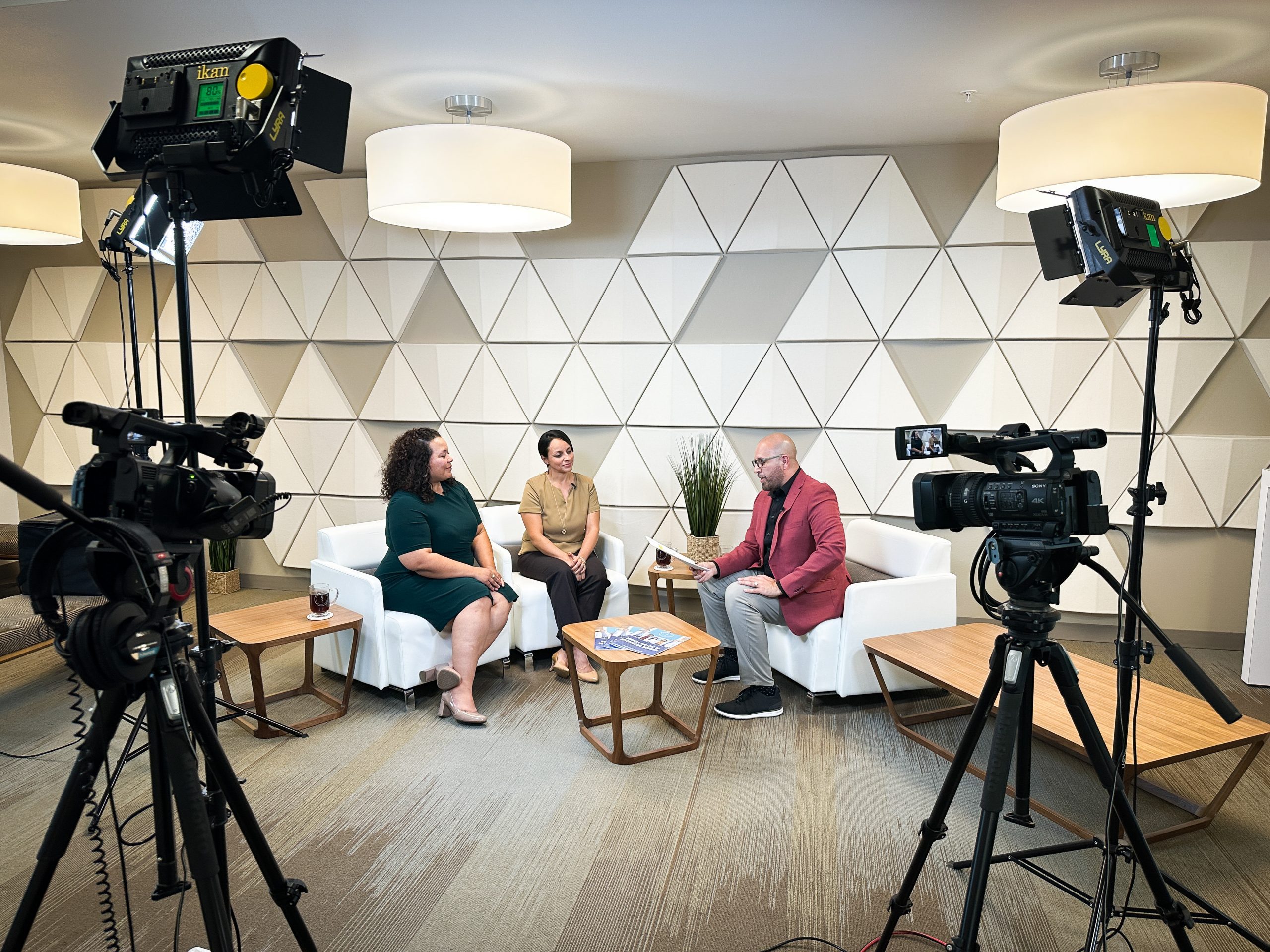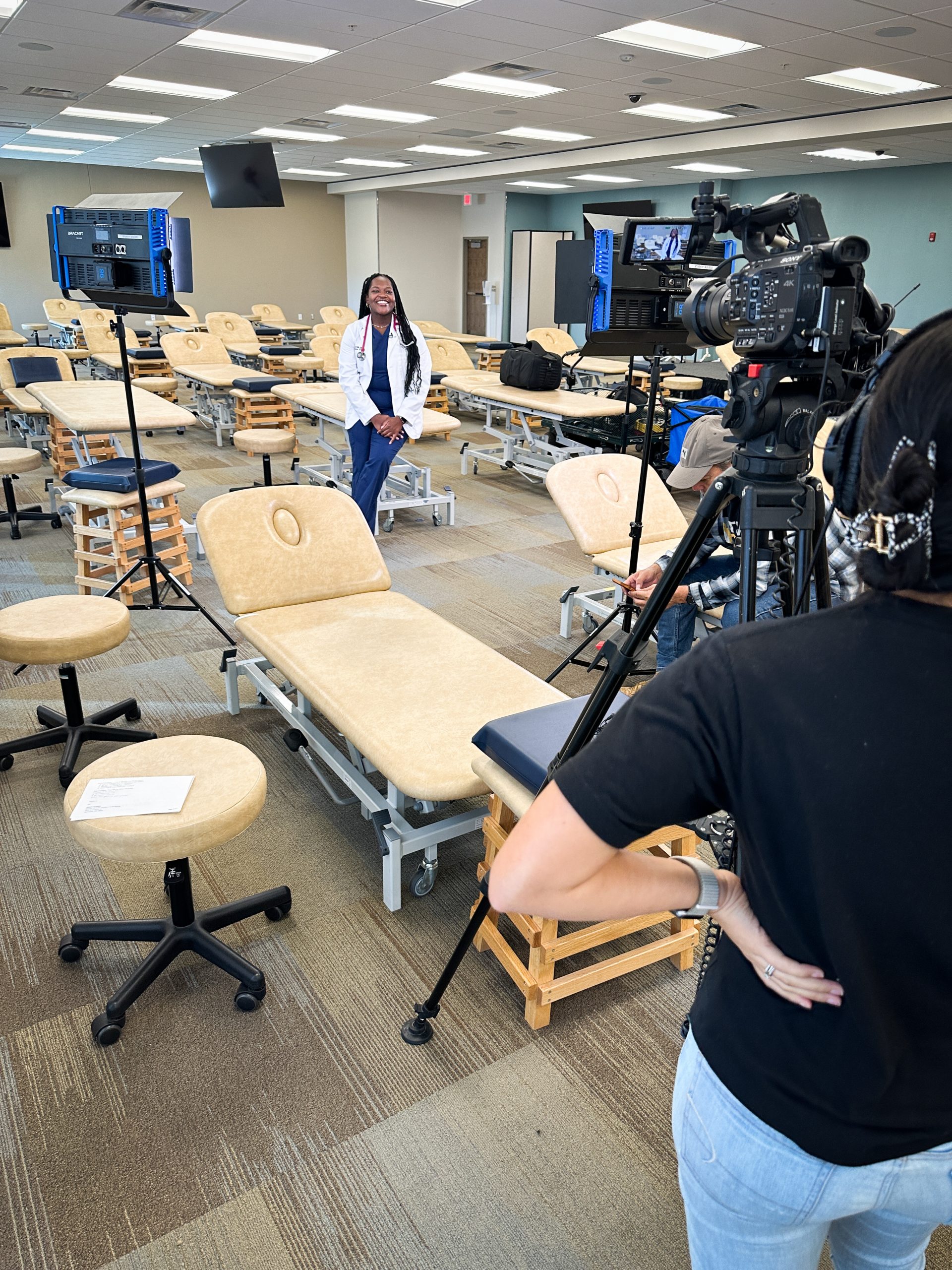 Dr. Melissa Gomez, MD is an Internal Medicine Specialist in Las Cruces, New Mexico, affiliated with Mountain View Regional Medical Center. Dr. Gomez is also a member of our College’s adjunct faculty, assisting first-year students with their labs. She recently completed her article on the importance of Zone 2 Training on a person’s overall health and wellbeing.
Dr. Melissa Gomez, MD is an Internal Medicine Specialist in Las Cruces, New Mexico, affiliated with Mountain View Regional Medical Center. Dr. Gomez is also a member of our College’s adjunct faculty, assisting first-year students with their labs. She recently completed her article on the importance of Zone 2 Training on a person’s overall health and wellbeing.
The Importance of Zone 2 Training
- There are primarily two types of fuel used during exercise, fatty acids and glucose.
- Fatty acids are a slower fuel that can provide you with energy for long periods of time
- Glucose is a fuel that can provide you with energy more quickly but it doesn’t last as long
- You use more fatty acids at a lower intensity
- You use glucose at a higher intensity
- Fatty acids are primarily oxidized (metabolized into fuel for use by the muscle) in the mitochondria
- Glucose is primarily oxidized in the cytosol
- People with healthier metabolisms have more mitochondria and they can metabolize more fuel both at rest and while exercising
- In order to have more mitochondria, you have to tell your body you need more mitochondria which means you have to do the type of exercise that utilizes the mitochondria
- A slower, lower intensity exercise (called Zone 2) uses almost exclusively fatty acids and the mitochondria to provide you with the energy you need to exercise.
- HIIT and other higher intensity exercises like faster rowing, running, faster swimming, (called Zone 3-4+) use less fatty acids and mitochondria and more glucose and cytosol to provide you with energy and can even get to the point where you are only burning glucose.
- If you do more of this type of exercise you don’t signal to increase your mitochondria and therefore don’t teach your body how to use more fuel both while exercising and at rest.
- If you want to burn the most fat during and after cardio you need to train your Zone 2.
- Zone 2 is documented as a lactic acid level between 1.5-2.0, it can be defined as 180- your age, minus 10 if you are on any medication, it can also be defined as an exercise level at which you can still have a conversation without too much difficulty.
- The amount of Zone 2 exercise recommended is 45-90 minutes 3-4 times a week.
Why Train in Zone 2 or How Can I Improve My Metabolism and Lose Weight?
So wait, are you telling me I don’t have to kill myself to lose weight and improve my health?
“Beast Mode,” “No Pain, No Gain,” “Leave it all on the Mat,” “Sweat is Fat Crying.”
In the fitness and exercise world, the impression is: the harder you train the better your results and the more weight you can lose. There is no shortage of motivational quotes insinuating as much, but is that what the research suggests is best for our overall health, longevity, and weight loss?
Based on the work of Inigo San Millan, Ph. D., Assistant Professor at the University of Colorado and 25 year veteran in training elite athletes, and Phil Maffetone, health practitioner, internationally recognized researcher and author, it appears that regular (3-4 times a week) lower intensity exercise for longer periods of time (45-90 minutes) is best both for improving performance in elite athletes, but also for improving weight loss, health and longevity for normal people.
As a physician and recreational athlete, I have told myself and my patients in the past that training at a higher intensity for longer periods of time was better. During my medical residency, I ran 7 miles a day in the hopes of losing some weight. However, I noticed both in myself and in my patient population that exercise rarely produced significant weight loss. I just keep telling myself, “If only I could run faster for longer I would see weight loss.” The only thing I really saw from all those years of running as fast as I could tolerate for as long as I could tolerate was premature arthritis in my knees. To be fair I do feel that running helped me maintain my weight and cardiovascular conditioning.
After seeing no weight loss and more pain I stopped running in my early 40’s to focus more on resistance training and also told my patients that based on my experience and the best medical literature available to me at the time, exercise was not a very effective way to lose weight. Many of them were quite pleased to hear that they didn’t have to exercise; I cringe now thinking of the missed opportunities I had to counsel them, I just didn’t know any better.
But now, after spending many hours educating myself on the work of Inigo San Millan and Phil Maffetone, I have changed my tune. I feel that we should all be doing cardiovascular training and particularly Zone 2 training for weight loss and health.
What is Zone 2 training you ask? It is the maximal level of aerobic exercise that you can do to burn fat inside of the mitochondria of your cells (the powerhouse inside your cells where most of your energy is produced) before you cross over into anaerobic exercise and start burning more glucose outside of the mitochondria and less fat inside of the mitochondria. When you burn glucose instead of fat and the energy is primarily being produced outside of your mitochondria, your mitochondrial utilization goes down.
And why does this matter? Because when you are producing all of the energy you need in the mitochondria and are on the threshold just before you start using glucose for the energy you are using your mitochondria at maximum capacity and this acts as a signal for your body to grow more mitochondria. If you have more mitochondria you develop a healthier metabolism that can burn more fuel which can help with weight loss, improve blood sugar control and help protect you against diseases like obesity, heart disease, diabetes, and cancer.
And why can’t you achieve this with high-intensity interval training (HIIT) or faster running, rowing, swimming, etc? Because when you perform these higher intensity exercises you transition from burning fat inside your mitochondria into burning glucose outside of your mitochondria. Unfortunately, this does not stimulate your body to grow your mitochondria and may explain why higher intensity exercise (like my running all those years) is not as effective for weight loss.
So if I should train in Zone 2 how do I know if I am in Zone 2?”. There are two ways to test for Zone 2 exercise. The easier way is based on Phil Maffetone’s work. He recommends that you take the number 180 and minus your age to get your Zone 2 Heart Rate goal in beats per minute. He also recommends that if you are recovering from a major illness, are on any regular prescription medication, or have been overtraining subtract another 10 points from your heart rate goal. If you have a mild injury, get colds and flu more than twice a year, have seasonal allergies or asthma or are overweight (waist circumference is more than half of your height), or you are just starting or have stopped exercise recently, subtract 5 points from your heart rate goal.
An example: a 45-year-old person who exercises regularly with high blood pressure on medication would calculate as follows: 180 – 45(age) – 10(on medication)= 125 beats per minute as your Zone 2 heart rate goal.
The more accurate but also more difficult way to tell if you are in Zone 2 is to test your lactic acid levels which require a special machine that can measure the lactic acid levels in your blood and special testing strips which are not readily available to the average person or even the average physician.
Once you have figured out your Zone 2 heart rate goal, Inigo San Millan recommends that you perform Zone 2 training 3-4 times a week for 45-90 minutes. For example, I will do my zone 2 training today. I am 42 and take no medications and exercise regularly. My heart rate goal should be at 138 beats per minute (or slightly less) during my Zone 2 training and I will do this for 45 minutes today on my stationary bike. Compared to my previous “go hard or go home” cardio days, the intensity of this session will be much lower.
Now that I am equipped with this new knowledge, on top of recommending regular resistance training I will start to recommend Zone 2 training to all of my patients who are interested in weight loss and want to live a longer, healthier life. Of course, this will be done in conjunction with diet and lifestyle changes to help people feel better which almost always means that they will also live longer, have less disease, and have a higher quality of life as we age. Isn’t that what we all want?









